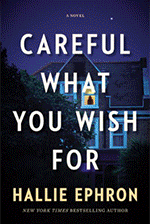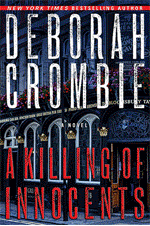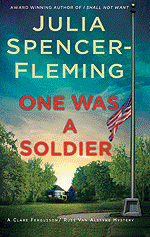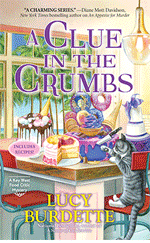 Julia Spencer-Fleming: It's always a good Sunday when we have a delicious recipe from Honorary Red Celia Wakefield! Today, in honor for the Queen's Platinum Jubilee and several June birthdays, she shows us how to make the scrumptious and surprisingly easy English tea-time classic, the Victoria Sponge Sandwich. We have pictures of the process throughout, and at the end, two videos to walk you live through making your own jammy treat.
Julia Spencer-Fleming: It's always a good Sunday when we have a delicious recipe from Honorary Red Celia Wakefield! Today, in honor for the Queen's Platinum Jubilee and several June birthdays, she shows us how to make the scrumptious and surprisingly easy English tea-time classic, the Victoria Sponge Sandwich. We have pictures of the process throughout, and at the end, two videos to walk you live through making your own jammy treat.
 Good morning JRW’s all, I am still coming down from a Platinum high not to mention an appearance from my favorite bear, Paddington, named after the station from which I travelled to Cornwall so many times when I was younger. Weekends filled with pomp, ceremony and pure rejoicing are far too few. I hope you all will forgive me for a little nostalgia as I look back seventy years.
Good morning JRW’s all, I am still coming down from a Platinum high not to mention an appearance from my favorite bear, Paddington, named after the station from which I travelled to Cornwall so many times when I was younger. Weekends filled with pomp, ceremony and pure rejoicing are far too few. I hope you all will forgive me for a little nostalgia as I look back seventy years.
Picture me sitting on a splintery wooden floor with a group of other kids listening to the radio marveling at the sounds of HM’s Coronation coming to us via the BBC World Service radio. Why was I not watching television? I was at boarding school in Sri Lanka (Ceylon), there was no TV on the island. The sound of Handel’s magnificent choral anthem, ‘Zakok the priest’, has created lifelong joy for me and whenever I hear it played I must sing along. Victor is six months younger than the Queen so I hold then both close and wish good health to Her Majesty.
 |
| Artist Eleanor Tomlinson's sketch has been seen worldwide! |
Debs wrote the previous Sunday wishing that she could have a Victoria sponge sandwich for her Birthday - sending Happy Birthday belated wishes to Debs and to Jenn, and to any other Red with a June birthday. In talking over with Julia what I might make for Sundays treat we decided that a Victoria sandwich was the cake of the week and there was probably one on the table for the Queen’s tea with Paddington. I bet it had marmalade in the center too.
 I reasoned that Victoria sponge had some reference to Queen Victoria, but was most surprised to learn that sponge cakes were first written about in the seventeenth century. “The earliest attested sponge cake recipe in English is found in a book by the English poet Gervase Markham, The English Huswife, Containing the Inward and Outward Virtues Which Ought to Be in a Complete Woman (1615)”. There is an interesting comment stating that as most women were not taught to read at that time, books such as these were read principally by the gentry and clergymen. A pleasant change from the volumes of sermons available for ones edification according to Miss Jane Austen.
I reasoned that Victoria sponge had some reference to Queen Victoria, but was most surprised to learn that sponge cakes were first written about in the seventeenth century. “The earliest attested sponge cake recipe in English is found in a book by the English poet Gervase Markham, The English Huswife, Containing the Inward and Outward Virtues Which Ought to Be in a Complete Woman (1615)”. There is an interesting comment stating that as most women were not taught to read at that time, books such as these were read principally by the gentry and clergymen. A pleasant change from the volumes of sermons available for ones edification according to Miss Jane Austen.
 However thanks to Mr. Alfred Bird, creator of Birds Custard, a much loved dessert confection, we can still eat it today. Mrs Bird was allergic to eggs, a necessary part of custard making, Mr. Bird, a chemist, started experimenting and created baking powder to be added to liquids to thicken them. He was so successful that we are still using Birds custard powder today instead of making that sauce from scratch. And why was it so successful? Well it takes skill not to curdle the custard mix. There are many examples of this on the Great British BakeOff. The inclusion of baking powder into the kitchen made it possible to bake with butter rather than just using egg whites to rise a cake, as volume is the goal.
However thanks to Mr. Alfred Bird, creator of Birds Custard, a much loved dessert confection, we can still eat it today. Mrs Bird was allergic to eggs, a necessary part of custard making, Mr. Bird, a chemist, started experimenting and created baking powder to be added to liquids to thicken them. He was so successful that we are still using Birds custard powder today instead of making that sauce from scratch. And why was it so successful? Well it takes skill not to curdle the custard mix. There are many examples of this on the Great British BakeOff. The inclusion of baking powder into the kitchen made it possible to bake with butter rather than just using egg whites to rise a cake, as volume is the goal.
 Let’s make a Birthday Cake for Debs and the rest of the June birthday folk and check out my skill level. While I wish that I had you all here to celebrate, this is my best attempt with my gracious sous chef, Julia.
Let’s make a Birthday Cake for Debs and the rest of the June birthday folk and check out my skill level. While I wish that I had you all here to celebrate, this is my best attempt with my gracious sous chef, Julia.
I don’t know when I last attempted a Victoria Sandwich. Tea on my grandparents lawn in the summer and a Victoria sandwich to enjoy after one had filled up on regular sandwiches is a warm childhood memory. Closing my eyes I can see the house front, the very scummy pond that outlined the edge of the property, the daisies in the grass, let’s make a daisy chain. For that careful work one does need a well grown thumb nail.
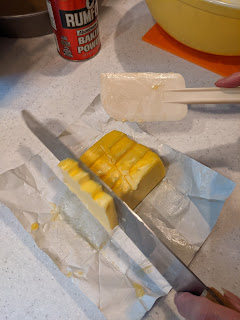 The Victoria sandwich cake still reigns supreme, and the reason for this may well be Mary Berry. Most of you may know Mary Berry from The Great British BakeOff. But doing a little research I found she was publishing recipes in magazines as far back as1966 - but I missed her writings. Probably because I was a bit of a food snob in those days reading Elizabeth David, Constance Spry and Robert Carrier, making recipes from the London Sunday Times, not reading ‘womens’ magazines, shame on me.
The Victoria sandwich cake still reigns supreme, and the reason for this may well be Mary Berry. Most of you may know Mary Berry from The Great British BakeOff. But doing a little research I found she was publishing recipes in magazines as far back as1966 - but I missed her writings. Probably because I was a bit of a food snob in those days reading Elizabeth David, Constance Spry and Robert Carrier, making recipes from the London Sunday Times, not reading ‘womens’ magazines, shame on me.
Just to be clear before I start I am copying both these recipes to give you something for comparison, but the baking skill or lack of same will be mine with Julia as the judge. I am going to use the measures from Mary Berry, as she is using an 8” cake pan, whereas my Constance Spry Cookery Book stipulates a 7” pan. Here are a couple of photos with the older recipe.
Mary Berry’s Victoria sponge sandwich *
Ingredients
4 free-range eggs
225g/8oz caster sugar, plus a little extra for dusting the finished cake
225g/8oz self-raising flour
2 tsp baking powder
225g/8oz butter at room temperature, plus a little extra to grease the tins
To serve
good-quality strawberry or raspberry jam
whipped double cream (optional)
Method
 Preheat the oven to 350F. Grease and line two 20cm/8in sandwich tins*. Use a piece of baking paper to rub a little butter* around the inside of the tins until the sides and base are lightly coated, then line the bottom with a circle of baking (parchment) paper.
Preheat the oven to 350F. Grease and line two 20cm/8in sandwich tins*. Use a piece of baking paper to rub a little butter* around the inside of the tins until the sides and base are lightly coated, then line the bottom with a circle of baking (parchment) paper.Break the eggs into a large mixing bowl, then add the sugar, flour, baking powder and (softened)* butter. Mix together until well combined with an electric hand mixer (you can also use a wooden spoon), but be careful not to over mix. Put a damp cloth under your bowl when you’re mixing to stop it moving around. The finished mixture should fall off a spoon easily.
 Divide the mixture evenly between the tins: this doesn’t need to be exact, but you can weigh the filled tins if you want to check. Use a spatula to remove all of the mixture from the bowl and gently smooth the surface of the cakes.
Divide the mixture evenly between the tins: this doesn’t need to be exact, but you can weigh the filled tins if you want to check. Use a spatula to remove all of the mixture from the bowl and gently smooth the surface of the cakes.Bake the cakes on the middle shelf of the oven for 25 minutes. *Check them at 20 minutes. The cakes are done when they’re golden-brown and coming away from the edge of the tins. Press them gently to check – they should be springy to the touch. Cool in their tins for 5 minutes. Run a palette or rounded butter knife around the inside edge of the tins and *carefully turn the cakes out onto a cooling rack.
 To assemble the cake, place one cake upside down onto a plate and spread it with plenty of jam. If you want to, you can spread over whipped cream too. Top with the second cake, top-side up. Sprinkle over the caster sugar / confectioners sugar.
To assemble the cake, place one cake upside down onto a plate and spread it with plenty of jam. If you want to, you can spread over whipped cream too. Top with the second cake, top-side up. Sprinkle over the caster sugar / confectioners sugar.
Celia’s hacks, Look for the * in the text for my comments.
 Plain flour is used in the USA. Self raising flour is harder to find though I believe it may be ordered on line. Just add 2tsp baking powder to each 8 oz of flour used. 1 Cup of flour is equal to 5 oz in weight.
Plain flour is used in the USA. Self raising flour is harder to find though I believe it may be ordered on line. Just add 2tsp baking powder to each 8 oz of flour used. 1 Cup of flour is equal to 5 oz in weight.Castor sugar is a finer grade than granulated sugar. I put 8 oz sugar in my mini prep and whirled it until I could see the granules become fine.
 I find cake pan sizing most confusing, my pan measures 9” across the top but 8” across the bottom.
I find cake pan sizing most confusing, my pan measures 9” across the top but 8” across the bottom. I used the butter paper to carefully smear butter over the base and sides. Then I floured the two pans. It doesn’t say so in the directions but this technique does work.
 I chose the more traditional method by creaming my butter first with an electric mixer. This method both saved time and churned the butter to a lovely pale cream color before I added sugar and eggs. However next time I make this I shall do it all by electric mixer and then blend in the flour using a wooden spoon.
I chose the more traditional method by creaming my butter first with an electric mixer. This method both saved time and churned the butter to a lovely pale cream color before I added sugar and eggs. However next time I make this I shall do it all by electric mixer and then blend in the flour using a wooden spoon.A palette knife has a long flat, flexible blade, very useful in baking.
When turning the cakes out run the palette knife or spatula around the edge, then with cover pan with a kitchen towel and turn onto the wire rack. This will avail wire marks on the cake.
My cakes were cooked at 20 minutes.
Mary Berry’s Victoria sponge recipe is from BBC Food.







